1 hendford
1 hendford
(East Side) - recently part of Beale's
No 1 Hendford, on the corner with High Street, was probably originally built as a small, three-storey town house of stucco on brickwork under a tiled roof. By the middle of the nineteenth century at the latest it had been converted to shops with a separate doorway to accommodation over.
By 1861 the premises were occupied by watch and clock maker Robert Dobell and his son Frederick. Around 1890 draper Alfred Davis, of 2 Hendford (next door), took over Dobel's premises and combined the two shops into one. He appears to have left Yeovil between 1900 and 1905. Around this time the building was occupied by the Rainbow Dye Works as seen in a photograph below.
The building was acquired by Lindsay Denner and incorporated into his store next door at 25 High Street. It was heightened, re-roofed and re-styled yet again during the twentieth century and later formed an integral part of Beales' store.
The following description is from the Somerset Historic Environment Record -
Shops; probably always so: C19 mid. In two parts, themselves (now) part of a larger department store. Brick (colour-washed) with plain clay tiled roofs, brick chimney stack to right-hand side. Left half of 3-storeys of 2-bays, seemingly specially designed as a sympathetic extension to 25 High Street. Modern shopfronts to ground floor, segmental arched 2-light casements to first floor (at the time of writing in the 1980s - this was the re-styling of around 1900), with gauged brick arches and plain labels over to second floor 2-double sash windows in plain openings, with flat gauged brick arches. Brick pilasters to each side, with string course through above second floor; then panels in the pilasters, a thin cornice and a brick parapet hiding the roof. The right half plainer, also 3-storeys of 2-bays and at slightly lower levels: modern ground floor shop front and late C20 windows in plain openings with flat gauged brick arches to first floor: the second floor has two 4-pane sash windows in similar openings.
gallery
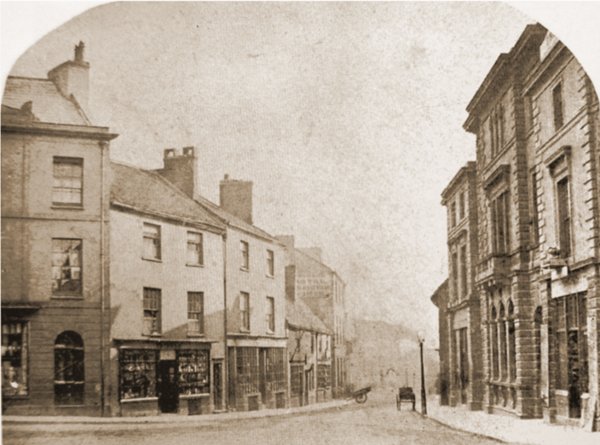
This photograph of Hendford dates to around 1870 and is one half of a stereoscopic pair. At far left is 25 High Street, the shop newly-acquired at this time by Lindsay Denner. The imposing building at right was Stuckey's bank. The three storey building at centre (just beyond the two-storey shops) it the Three Choughs Hotel.
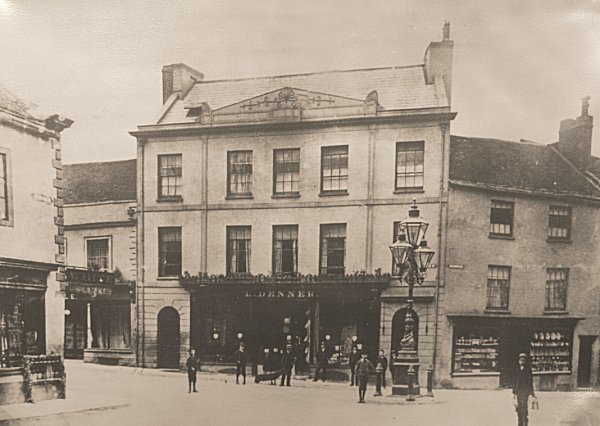
This view of Denner's premises at 25 High Street was taken between 1887 (when the Sugg lamp was erected in the street outside to celebrate the Jubilee of Queen Victoria) but before 1897 when the Capital and Counties Bank replaced the building on the corner of High Street seen at extreme left. 25 High Street had originally been built in 1836 for another draper's business, Edwards & Dean, who were listed as being in the Borough in Pigot's 1830 trade directory as well as the Somerset Gazette Directory of 1840. It was later occupied by Hurrell & Berryman who were listed in the Post Office Directory of 1866 as silk mercers and were the owners immediately prior to Denner.
At right No 1 Hendford remains largely unaltered from the previous photograph - at this time it was occupied by clock and watchmaker Frederick Dobel until August 1889, at which time it was occupied by draper Alfred Davis who joined it with his own premises at 2 Hendford to form a single, larger shop.
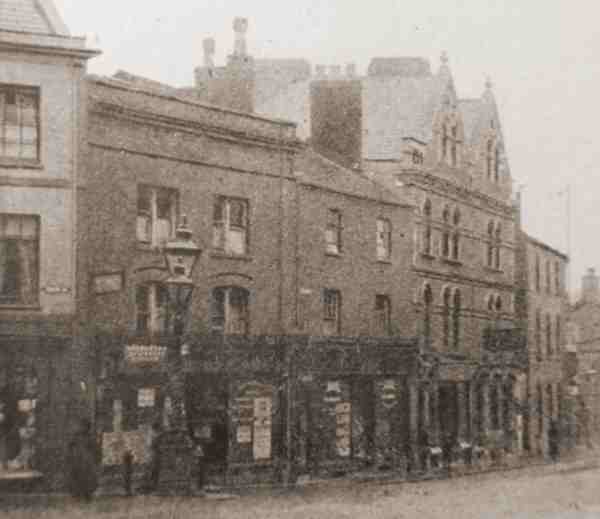
Photographed around 1890, what appear to be two separate premises at centre had been combined into Alfred Davis' drapery. The buildings would eventually be absorbed into Denner's store.
Comparing this photograph with the previous photograph, it is seen that the front of the building (at least) has been remodelled (if not rebuilt) and has larger windows to the first and second floors.
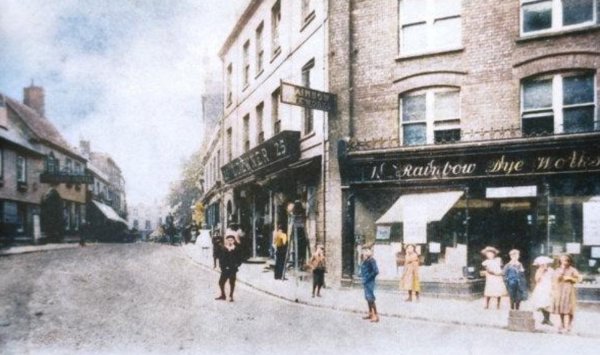
From my
collection
A colourised view of High Street taken from Hendford about 1905. The Mermaid Hotel is at left, Denner's shop is at centre with the Rainbow Dye Works next door at No 1 Hendford. By this time the original No 1 Hendford of the previous two photographs had been remodelled as seen here.
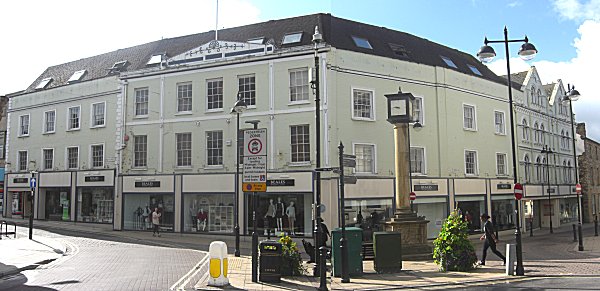
..... and seen today as Beales, re-roofed and re-styled yet again during the twentieth century. Photographed in 2013.